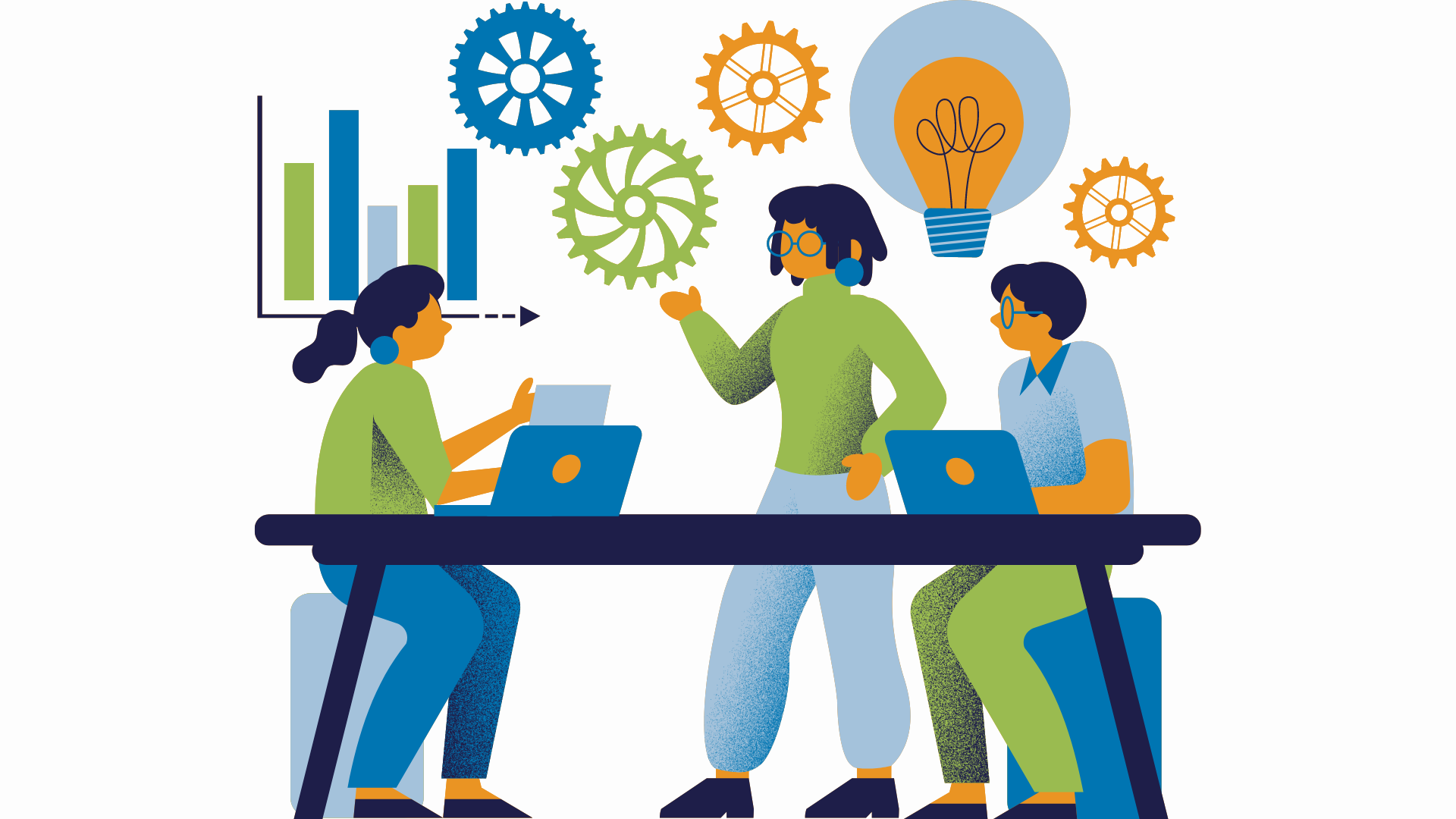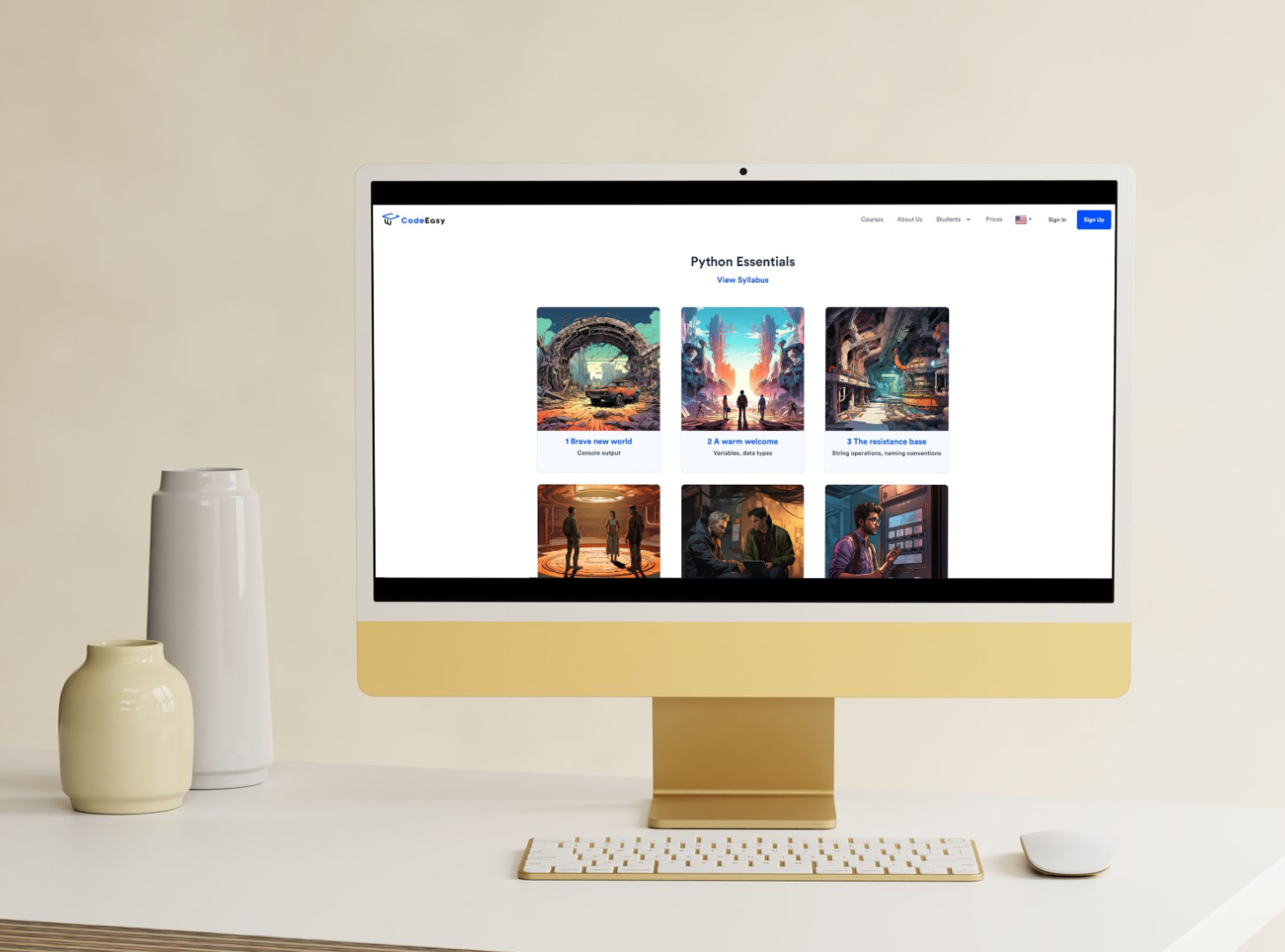Popular Misconceptions Computer Science Educators Encounter
Computer Science (CS) is a rapidly growing and evolving field, attracting many students and educators. However, it also brings with it a set of misconceptions that can hinder both teaching and learning. Here are some of the most common misconceptions that CS teachers often encounter:
1. "Computer Science is Just About Coding"
One of the most widespread misconceptions is that computer science is solely about writing code. While programming is a significant component, CS encompasses much more, including algorithms, data structures, cybersecurity, artificial intelligence, and theoretical foundations. This narrow view can limit students' understanding and appreciation of the field's breadth and depth.

2. "You Need to Be a Math Genius"
Many people believe that one must be exceptionally good at math to excel in computer science. While mathematical thinking and problem-solving skills are important, not all areas of CS require advanced math. This misconception can deter students who might otherwise excel in the field but feel intimidated by the perceived math requirement.

These areas still require logical thinking and problem-solving skills but are less math-intensive. Here are some of them:
a. Web Development
- Frontend Development: Involves creating the visual aspects of websites and web applications using HTML, CSS, and JavaScript. It focuses on user interface (UI) and user experience (UX) design.
- Backend Development: Involves server-side programming and database management using languages like Python, Ruby, PHP, and Node.js. Basic math is needed, but advanced math is typically not required.
b. Mobile App Development
- Android Development: Building applications for Android devices using Java or Kotlin.
- iOS Development: Creating applications for Apple devices using Swift or Objective-C. Both fields require knowledge of programming and software design but do not usually demand advanced mathematical concepts.
c. Software Testing and Quality Assurance
- Manual Testing: Involves manually testing software to find bugs and ensure it meets requirements.
- Automated Testing: Writing scripts and using tools to automate the testing process. These roles focus on ensuring software quality and reliability, with less emphasis on advanced math.
d. Technical Writing
- Documentation: Creating manuals, guides, and documentation for software and hardware.
- Content Creation: Writing articles, tutorials, and other content to educate users and developers. Technical writers need to understand technology but do not typically need advanced math skills.
e. User Experience (UX) Design
- User Research: Conducting user research to understand user needs and preferences.
- Prototyping: Creating wireframes and prototypes to design intuitive user interfaces. UX designers focus on creating user-friendly designs and experiences, relying more on psychology and design principles than math.
f. IT Support and System Administration
- Technical Support: Assisting users with technical issues and troubleshooting software and hardware problems.
- System Administration: Managing and maintaining IT infrastructure, including servers, networks, and security systems. These roles require strong problem-solving skills and technical knowledge but not advanced math.
g. Project Management
- Agile Methodologies: Implementing agile practices to manage software development projects.
- Coordination and Planning: Overseeing project timelines, resources, and stakeholder communication. Project managers need organizational and leadership skills more than advanced mathematical knowledge.
h. Cybersecurity
- Network Security: Protecting networks from threats and ensuring data privacy.
- Ethical Hacking: Identifying and addressing vulnerabilities in systems. While some areas of cybersecurity do involve cryptography and advanced math, many roles focus on practical security measures and do not require deep mathematical knowledge.
i. Game Development
- Game Design: Creating the concepts, storylines, and gameplay mechanics for video games.
- Level Design: Designing and building levels and environments within games. Game development does require some math for physics and graphics, but many roles focus more on creativity and design.
3. "Computer Science is Only for Men"
The stereotype that computer science is a male-dominated field persists, discouraging many women and girls from pursuing it. This gender bias overlooks the contributions of many female pioneers in computer science and perpetuates a lack of diversity in the field. Teachers constantly work to dispel this myth and encourage more female students to engage in CS.

Here’s why computer science is for everyone, regardless of gender:
a. Historical Contributions by Women
- Pioneers in Computing: Women have been integral to the development of computer science from the beginning. Ada Lovelace, often credited as the first computer programmer, and Grace Hopper, who developed the first compiler, are just a couple of examples.
- Hidden Figures: The story of the women mathematicians and engineers at NASA, popularized by the movie "Hidden Figures," showcases how women have played crucial roles in computing and technology.
b. Increasing Female Participation
- Growing Numbers: The number of women in computer science programs is increasing. Initiatives aimed at encouraging girls to pursue STEM fields have resulted in more women entering and excelling in computer science.
- Female Role Models: There are many successful women in tech, such as Marissa Mayer, former CEO of Yahoo!, and Sheryl Sandberg, COO of Facebook, who serve as role models and inspiration for young women.
c. Supportive Organizations and Initiatives
- Women in Tech Groups: Organizations like Girls Who Code, Women Who Code, and the Anita Borg Institute offer support, resources, and networks for women in tech.
- Diversity Programs: Companies and universities are implementing diversity programs and scholarships to support women in computer science.
d. Educational and Career Opportunities
- Inclusive Curricula: Educational institutions are increasingly aware of the need for inclusive curricula that encourage participation from all genders.
- Equal Opportunities: The tech industry offers equal opportunities for men and women, with many companies actively seeking to hire and promote women to create a diverse and inclusive workforce.
e. Diverse Perspectives
- Innovation through Diversity: Diverse teams bring different perspectives and ideas, which can lead to more innovative solutions. Women bring valuable insights and approaches that enhance the field of computer science.
- Problem-Solving: Gender diversity in tech teams improves problem-solving and creativity, benefiting the industry as a whole.
f. Breaking Stereotypes
- Challenging Norms: The stereotype that computer science is a “male” field is being challenged and broken down. More women are entering the field and proving their capabilities.
- Positive Role Models: Highlighting successful women in computer science helps to break down these stereotypes and encourages more girls to pursue their interests in tech.
g. Community and Networking
- Supportive Networks: Women in computer science can find support and mentorship through networks and communities dedicated to supporting their growth and success.
- Collaboration: Collaborative efforts between men and women in the tech industry foster a more inclusive and productive environment.
4. "Computer Science is Boring"
Some students believe that computer science is dull or monotonous, imagining endless hours of staring at a screen and typing code. This misconception overlooks the creativity, problem-solving, and real-world applications of CS. Teachers strive to show the exciting and impactful projects that can be accomplished through computer science.
Here’s why computer science is anything but boring:
a. Creativity and Innovation
- Building New Technologies: Computer science allows you to create new technologies and applications that can change the world. From developing mobile apps to designing cutting-edge software, the possibilities are limitless.
- Creative Problem-Solving: Writing code is often compared to writing poetry or creating art. It requires creative thinking and innovative solutions to solve complex problems.
b. Wide Range of Applications
- Diverse Fields: Computer science is applied in numerous fields such as healthcare, finance, entertainment, education, and more. This diversity means you can work on projects that interest you, from creating life-saving medical software to developing the next big video game.
- Interdisciplinary Opportunities: Computer science intersects with many other disciplines, offering the chance to collaborate with experts in various fields and work on interdisciplinary projects.
c. Impact on the World
- Solving Real-World Problems: Computer scientists tackle some of the world’s most pressing challenges, such as climate change, cybersecurity, and global health. The solutions they develop can have a profound impact on society.
- Improving Lives: From apps that make daily life easier to technologies that improve accessibility for people with disabilities, computer science improves lives in countless ways.
d. Continuous Learning and Growth
- Ever-Evolving Field: Technology is constantly advancing, which means there is always something new to learn. This continuous growth keeps the field exciting and ensures that there is never a dull moment.
- Professional Development: With numerous opportunities for professional development, conferences, workshops, and online courses, computer scientists can continuously expand their knowledge and skills.
e. High Demand and Job Satisfaction
- In-Demand Skills: Computer science skills are highly sought after across many industries, leading to numerous job opportunities and career paths.
- Job Satisfaction: Many computer scientists report high job satisfaction due to the challenging nature of the work, the ability to see tangible results, and the positive impact they can have.
f. Collaborative Environment
- Teamwork and Collaboration: Contrary to the stereotype of the lone programmer, computer science often involves working in teams. Collaboration with other developers, designers, and stakeholders makes the work more engaging and dynamic.
- Community and Networking: The tech community is vibrant and supportive, with numerous meetups, hackathons, and online forums where you can connect with like-minded individuals and share your passion.
g. Fun and Engaging Projects
- Gamification: Many educational tools and platforms gamify learning to make it more fun and engaging. Projects can range from creating interactive websites to building robots or developing virtual reality experiences.
- Personal Projects: Computer science allows you to pursue your interests through personal projects. Whether it’s a hobby app, a game, or a tool to automate a task, you can work on what excites you.
5. "Learning to Code is Quick and Easy"
With the rise of coding bootcamps and online courses, there's a misconception that one can master coding in a few weeks or months. While these resources are valuable, they can create unrealistic expectations about the time and effort required to truly understand and excel in computer science. Teachers often have to manage these expectations and emphasize the importance of consistent practice and learning.
Read our article How long it takes to master Python Programming from scratch
6. "Computers Do All the Work"
Some students think that once a program is written, the computer does all the work and there’s no need for further human input.

This overlooks the continuous process of debugging, optimization, and updating code to meet changing requirements. Teachers need to emphasize the iterative nature of software development and the ongoing role of the programmer.
Computers are still dependent on human ingenuity and input to function effectively. Here’s why this myth doesn’t hold up:
a. Human-Driven Innovation
- Problem Solving: Humans are essential for identifying problems that need solving and for developing creative and effective solutions. Computers execute tasks, but they rely on humans to define those tasks.
- Algorithm Design: The algorithms that power computer processes are designed by humans. These algorithms require deep understanding, innovation, and often complex decision-making.
b. Programming and Development
- Writing Code: Computers run programs, but those programs are written by humans. Programming requires logic, creativity, and problem-solving skills to create effective and efficient code.
- Software Development: Building software involves planning, designing, coding, testing, and debugging—all tasks that require human input and oversight.
c. Data Interpretation
- Analyzing Results: While computers can process vast amounts of data, humans are needed to interpret the results, make decisions based on those results, and adjust strategies accordingly.
- Critical Thinking: Data analysis often involves critical thinking to understand trends, patterns, and outliers. Computers can highlight data, but humans provide the contextual understanding.
d. System Design and Architecture
- System Design: Designing the architecture of computer systems, networks, and applications is a human task. It involves making decisions about how components will interact and ensuring the system meets the desired specifications.
- Customization: Customizing systems to meet specific user needs or organizational requirements involves human insight and planning.
e. Ethics and Responsibility
- Ethical Considerations: Decisions about how to use technology responsibly, how to handle data privacy, and how to ensure ethical use of AI and other technologies are made by humans.
- Bias and Fairness: Ensuring that algorithms and systems are free from bias and are fair to all users requires human oversight and ethical considerations.
f. Maintenance and Troubleshooting
- Maintaining Systems: Regular maintenance of computer systems, including updates, security patches, and performance tuning, is done by humans.
- Troubleshooting: When systems fail or encounter issues, human intervention is required to diagnose and fix the problems. Computers can provide error messages and logs, but humans must interpret and resolve the issues.
g. User Experience and Interface Design
- Designing Interfaces: Creating user-friendly interfaces involves understanding human behavior and preferences. This is a creative process that requires human empathy and insight.
- User Testing: Testing how real users interact with systems and making improvements based on their feedback is a human-centered process.
h. Innovation and Creativity
- Inventing New Technologies: Human creativity drives the invention of new technologies and applications. While computers can assist in the process, the initial ideas and innovations come from people.
- Artistic Endeavors: In fields like game design, digital art, and multimedia production, human creativity and artistic skills are essential.
7. "You Have to Start Young"
There’s a belief that if you didn’t start coding at a young age, it’s too late to learn. While early exposure can be beneficial, many people successfully learn computer science skills later in life. Teachers often encounter adult learners or older students who feel discouraged by this myth and work to show that it’s never too late to start learning.

8. "Computer Science is Only for 'Techies'"
The idea that CS is only for people who are inherently "tech-savvy" or have a natural aptitude for technology can be a barrier. This misconception suggests that those without a strong background in technology or a natural inclination towards it can't succeed in CS, which is not true. Teachers emphasize that persistence, curiosity, and a willingness to learn are more important than innate talent.

In reality, computer science is a diverse field that welcomes individuals with varied backgrounds, interests, and skill sets. Here’s why computer science is for everyone.
a. Interdisciplinary Nature
- Cross-Disciplinary Applications: Computer science intersects with numerous fields such as biology (bioinformatics), art (digital media), finance (fintech), and more. This means that people with interests in these areas can leverage computer science to enhance their primary field of study.
- Collaborative Projects: Many projects in computer science require collaboration with experts from other domains, making it a multidisciplinary field.
b. Problem-Solving Skills
- Logical Thinking: While logical thinking is important, it can be developed and honed through practice and education. It is not an innate skill that only 'techies' possess.
- Creativity: Computer science requires creativity to design innovative solutions and user-friendly applications, making it appealing to those who enjoy creative problem-solving.
c. Accessible Learning Resources
- Educational Platforms: There are countless online resources, tutorials, and courses designed for beginners, making it easier for anyone to start learning computer science regardless of their background.
- Community Support: Online communities, forums, and local meetups provide support and mentorship to learners at all levels, helping them overcome challenges and grow their skills.
d. Diverse Career Opportunities
- Variety of Roles: Computer science offers a wide range of career paths beyond traditional programming roles, including project management, user experience design, technical writing, and more.
- Non-Technical Positions: There are many roles within tech companies that do not require deep technical expertise, such as sales, marketing, customer support, and product management.
e. Focus on Soft Skills
- Communication: Effective communication is crucial for explaining technical concepts, collaborating with team members, and working with clients.
- Project Management: Managing projects, timelines, and resources requires organizational skills and strategic thinking, which are valuable in computer science.
f. Creativity and Innovation
- Design and Art: Fields like game design, digital art, and multimedia production blend computer science with artistic expression.
- Entrepreneurship: Computer science skills can empower individuals to start their own businesses, develop new products, and bring innovative ideas to life.
g. Social Impact
- Solving Real-World Problems: Computer science can be used to address global challenges such as climate change, healthcare, and education, attracting people passionate about making a positive impact.
- Community Projects: Many computer science projects involve community engagement and social good, providing opportunities for meaningful work.
h. Flexibility in Learning
- Learning at Your Own Pace: The availability of self-paced courses, like CodeEasy, and flexible learning options make it possible for anyone to learn computer science, even those with busy schedules or other commitments.
- Variety of Entry Points: Whether through formal education, bootcamps, or self-study, there are multiple pathways to enter the field of computer science.
9. "Computer Science is All About Individual Work"
The image of the solitary programmer working alone is prevalent, but modern computer science often involves significant teamwork and collaboration. From pair programming to large-scale projects requiring cross-functional teams, communication and teamwork are crucial skills. Teachers work to dispel this myth by incorporating collaborative projects and activities into their curriculum.

Here’s why computer science is not just about individual work:
a. Team-Based Projects
- Software Development Teams: Most software development projects involve teams of developers, designers, testers, and project managers working together to build and maintain applications.
- Agile Methodologies: Many companies use Agile methodologies, such as Scrum and Kanban, which emphasize teamwork, regular communication, and collaborative problem-solving.
b. Collaborative Tools and Platforms
- Version Control Systems: Tools like Git and platforms like GitHub and GitLab facilitate collaborative coding, where multiple developers can work on the same codebase simultaneously, review each other’s work, and manage changes collectively.
- Project Management Software: Tools like Jira, Trello, and Asana help teams coordinate tasks, track progress, and communicate effectively.
c. Pair Programming
- Two Heads Are Better Than One: Pair programming involves two developers working together at one workstation, with one writing the code and the other reviewing it in real-time. This practice improves code quality and fosters collaboration.
- Learning and Mentorship: Pair programming provides an opportunity for less experienced developers to learn from their peers, fostering a collaborative learning environment.
d. Code Reviews
- Quality Assurance: Code reviews are a standard practice where peers review each other's code to catch bugs, improve code quality, and share knowledge.
- Knowledge Sharing: Through code reviews, team members learn from each other’s coding styles and techniques, enhancing overall team skills.
e. Cross-Functional Teams
- Interdisciplinary Collaboration: Many projects require collaboration between developers, designers, data scientists, and business analysts, ensuring a well-rounded approach to problem-solving.
- User Experience (UX) Design: Developers often work closely with UX designers to create user-friendly interfaces and improve the overall user experience.
f. Open Source Communities
- Global Collaboration: Open source projects involve contributions from developers worldwide, who collaborate to build and improve software. Examples include projects like Linux, Python, and Apache.
- Community Engagement: Participating in open source projects helps developers connect with a global community, contribute to meaningful projects, and learn from others.
g. Hackathons and Competitions
- Collaborative Problem-Solving: Hackathons are events where individuals form teams to work on projects or solve challenges within a limited time. These events emphasize teamwork, creativity, and rapid collaboration.
- Networking Opportunities: Hackathons and coding competitions provide opportunities to meet new people, exchange ideas, and work collaboratively on innovative solutions.
h. Industry Collaboration
- Partnerships: Companies often collaborate with other organizations, research institutions, and universities on joint projects, fostering innovation and shared knowledge.
- Professional Networks: Industry conferences, meetups, and online forums provide platforms for professionals to share insights, collaborate on projects, and build professional relationships.
10. "Once You Learn One Language, You're Done"
Students often believe that mastering one programming language means they’re set for life. However, the field of computer science is constantly evolving, and learning multiple languages and technologies is often necessary. Teachers emphasize the importance of adaptable learning skills and the ability to pick up new languages and tools as needed.

Here’s why the myth that learning one language is enough doesn’t hold up:
a. Technological Advancements
- Emerging Languages: New programming languages are continuously being developed to address evolving technological needs. Staying current with these developments is essential for maintaining a competitive edge.
- Improved Tools: Existing languages are frequently updated with new features and improvements, requiring ongoing learning and adaptation.
b. Different Languages for Different Tasks
- Specialized Languages: Certain programming languages are better suited for specific tasks. For example, Python is often used for data science and machine learning, while JavaScript is the go-to for web development.
- Multi-Language Projects: Many projects require the use of multiple languages. For instance, a web application might use HTML, CSS, JavaScript for the front end, and Python or Java for the back end.
c. Diverse Programming Paradigms
- Object-Oriented Programming (OOP): Languages like Java and C++ are designed with OOP principles in mind.
- Functional Programming: Languages like Haskell and Scala emphasize functional programming concepts.
- Versatility in Paradigms: Learning different paradigms enhances problem-solving skills and adaptability.
d. Industry Requirements
- Job Market Demand: Different companies and industries often have specific language preferences. Being proficient in multiple languages increases job opportunities and flexibility.
- Project Requirements: The choice of language can depend on the project’s requirements, such as performance, scalability, and maintainability.
e. Continuous Learning and Growth
- Lifelong Learning: Technology professionals must commit to lifelong learning to keep pace with industry changes. This involves regularly updating skills and learning new languages.
- Professional Development: Workshops, courses, and conferences are essential for ongoing professional growth and staying informed about industry trends.
f. Cross-Language Proficiency
- Enhanced Problem-Solving: Knowing multiple languages can provide different perspectives on problem-solving, leading to more robust and innovative solutions.
- Code Integration: Many projects require integration between systems written in different languages, necessitating knowledge of multiple languages to ensure seamless interoperability.
g. Open Source and Community Contributions
- Collaborative Projects: Contributing to open-source projects often requires familiarity with various languages and tools used by different communities.
- Global Collaboration: Engaging with a diverse developer community broadens exposure to different languages and coding practices.
h. Adaptability to Change
- Evolving Projects: As projects grow and evolve, the technologies and languages used may change. Being adaptable and willing to learn new languages is crucial for long-term success.
- Technological Shifts: Major shifts in technology, such as the rise of mobile computing or cloud services, can drive the adoption of new languages and frameworks.
Conclusion
Addressing these misconceptions is crucial for creating a more accurate and welcoming perception of computer science. By debunking these myths, teachers can better prepare their students for the realities of the field and encourage a more diverse and engaged group of learners. This involves not only educating students about the true nature of CS but also fostering an inclusive and supportive learning environment that highlights the creativity, collaboration, and continual learning inherent in computer science.


